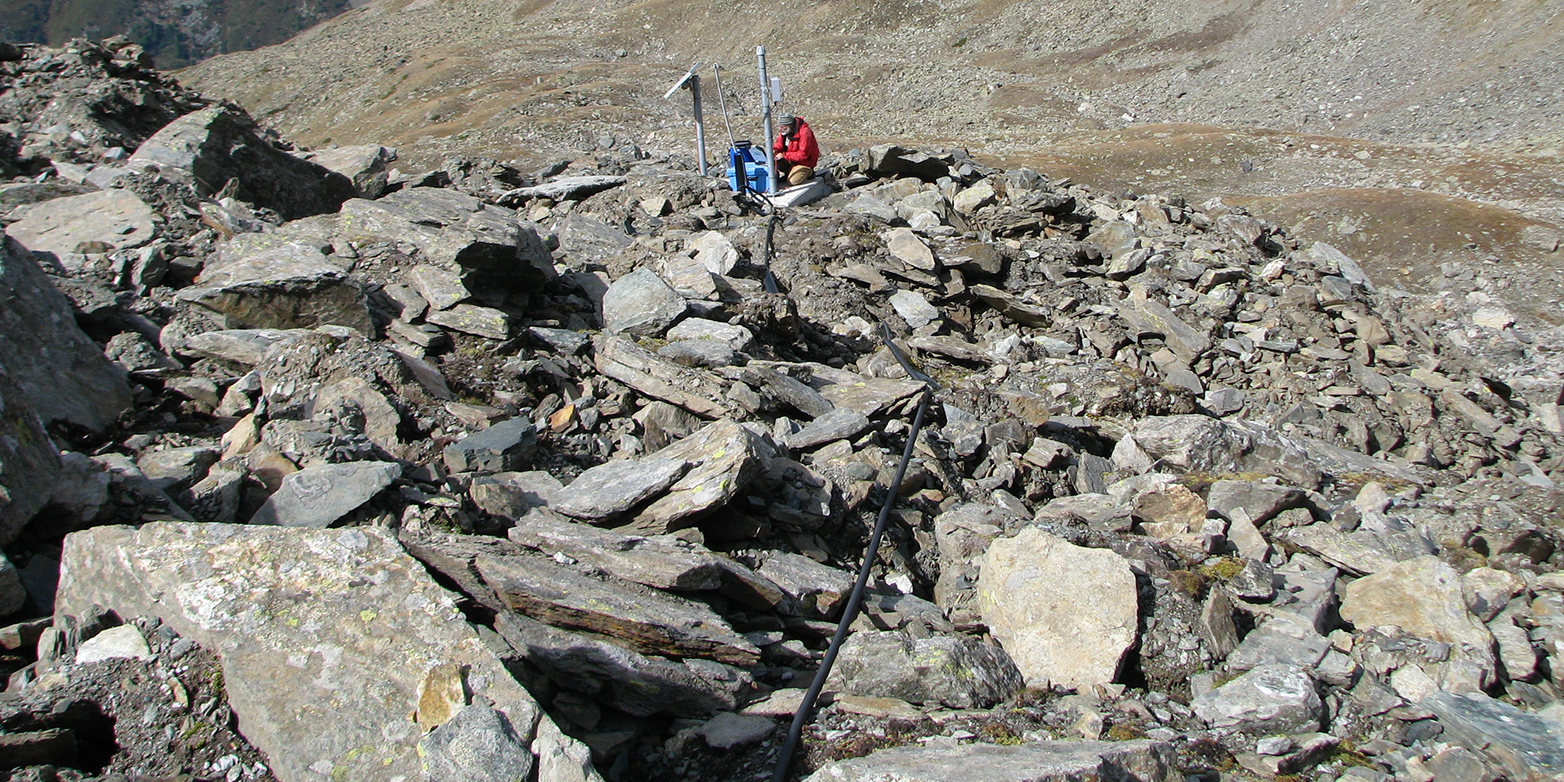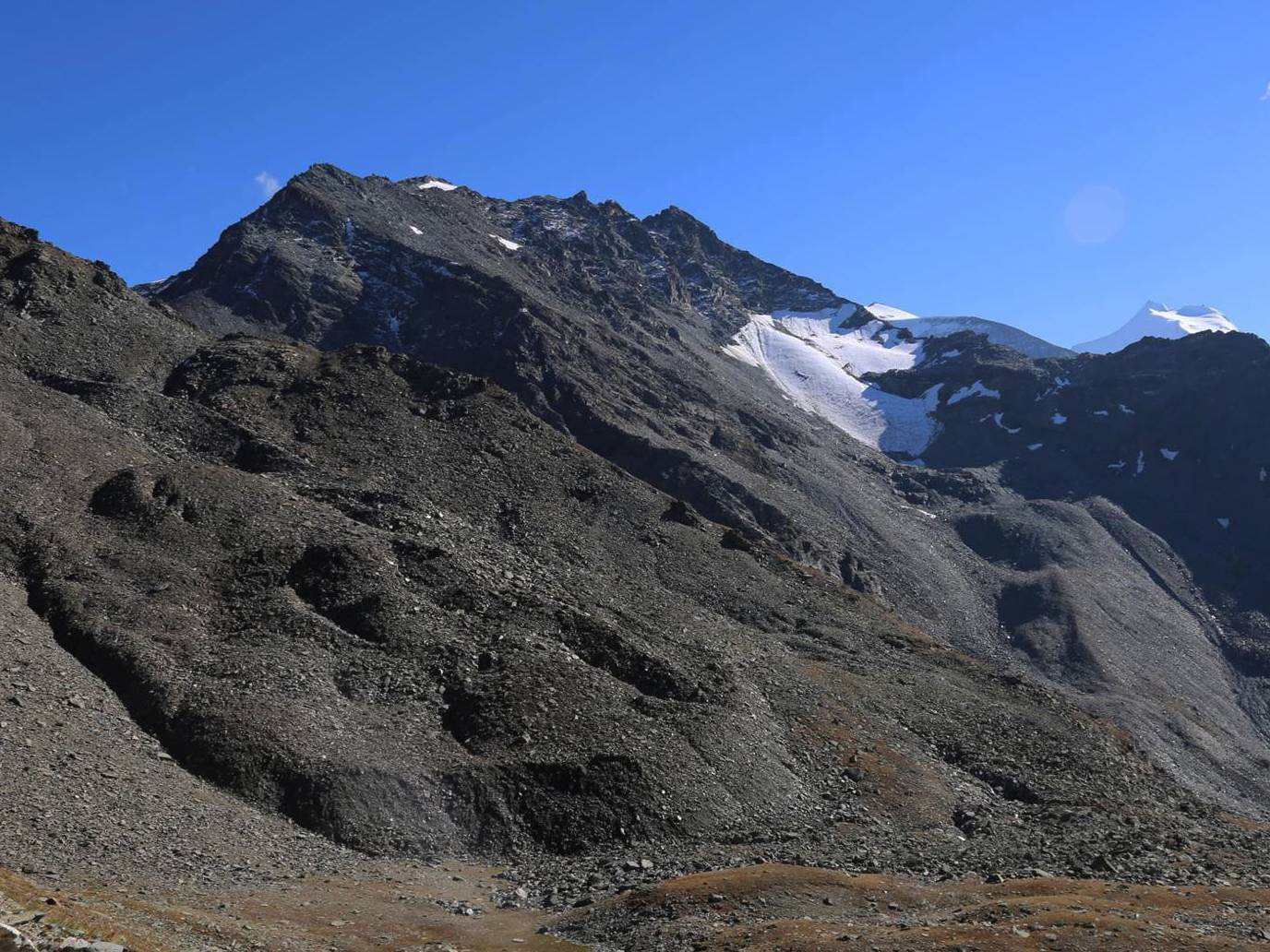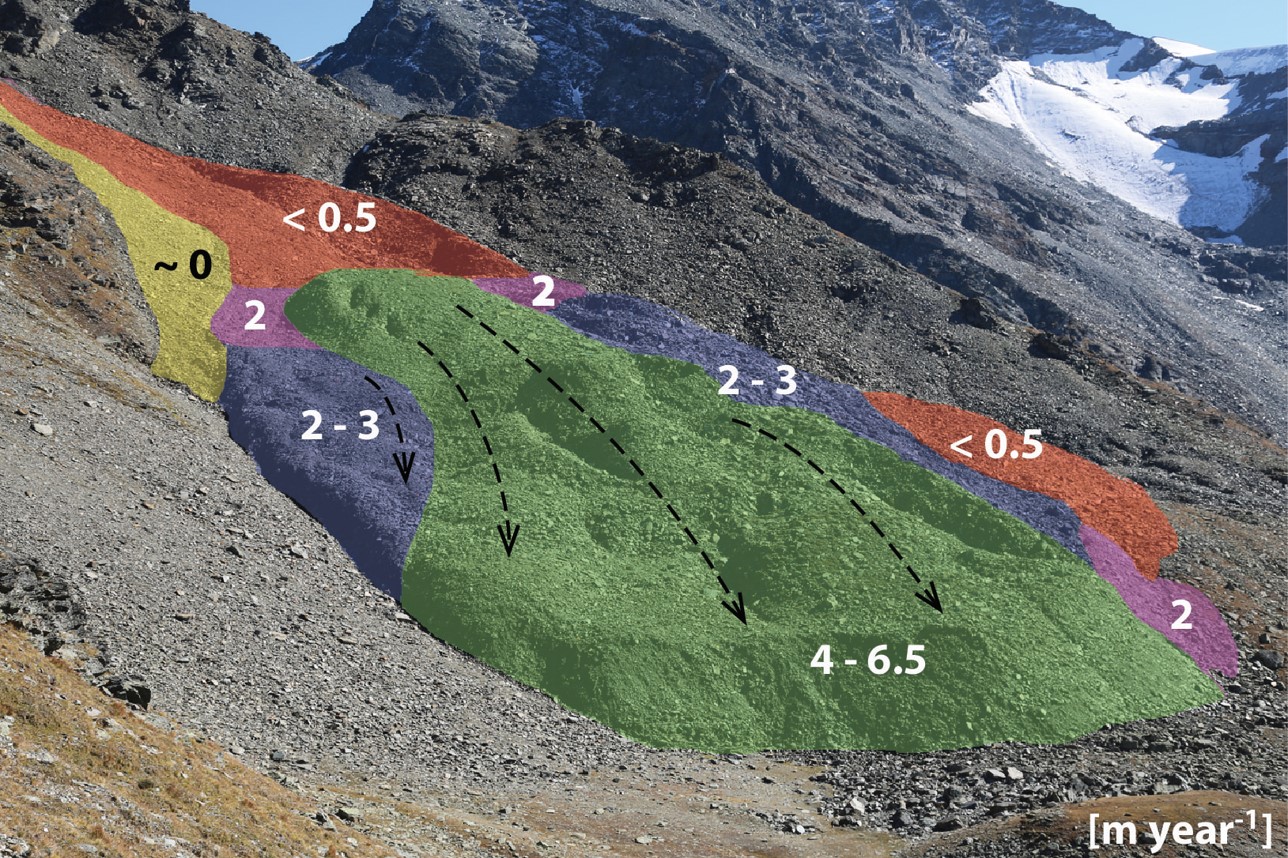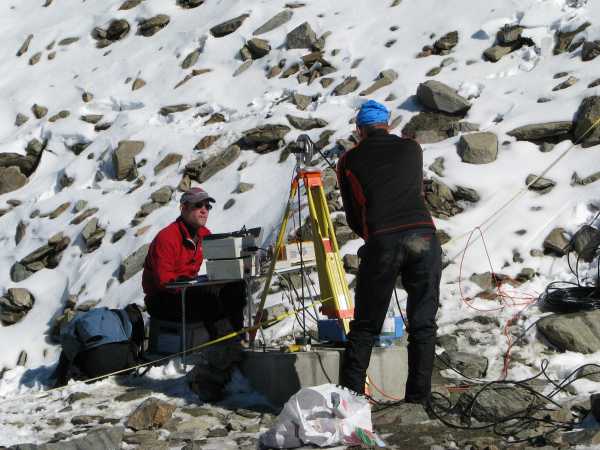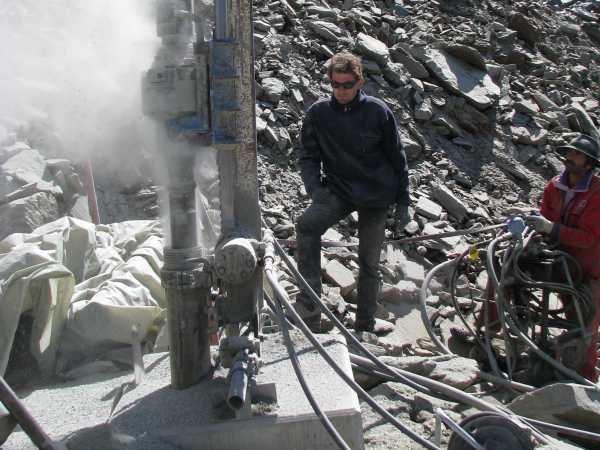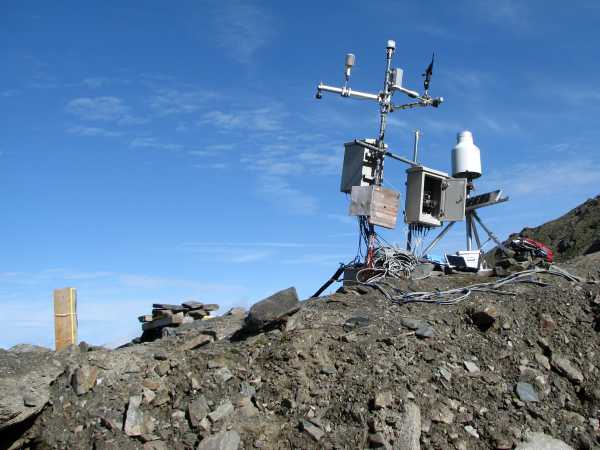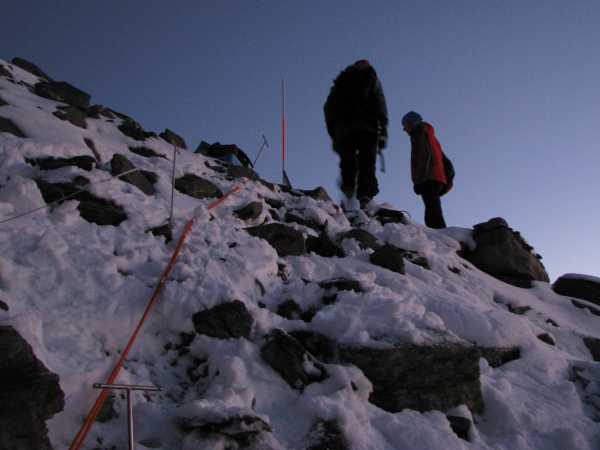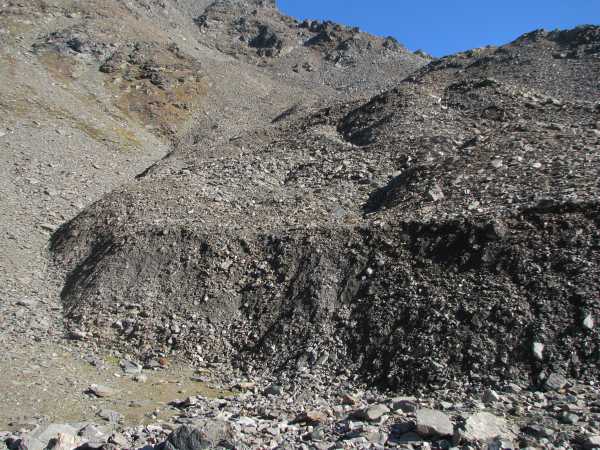Permafrost in continuous motion
ETH researchers have identified a rock glacier in canton Valais that is degrading and moving very quickly. Fortunately, it does not present an immediate threat to people and infrastructure.
Rock glaciers, containing ice and rock debris as alpine permafrost, are changing rapidly and profoundly in response to climate change. They create the risk of mass movements as they creep downhill, subside, spread and sometimes collapse. The question is whether these glaciers can potentially pose a threat to the surrounding area, including local residents and infrastructure.
To answer this question, researchers from a number of ETH institutes, and from the ETH spin-off Terrasense, have carried out a detailed study of a rock glacier situated at the foot of the Furggwanghorn mountain in the Turtmann Valley, in the canton of Valais. Their study has just been published in the journal external page Permafrost and Periglacial Processes.
Filling the knowledge gaps
“To identify the potential threat, you first need to ascertain the state of the rock glacier, and understand how it behaves,” says Thomas Buchli, a former doctoral researcher in the Chair of Geotechnical Engineering at ETH Zurich. “There are still some gaps in our knowledge here.”
Although many studies exist on rock glaciers, scientists have generally focused on measuring their surface and internal temperatures, as well as their surface creep rates. “The interaction between the soil mechanics, the ground temperature and the water inside a rock glacier has never been investigated in such detail," Buchli emphasises. Different measurements must be combined to achieve this. Most research to date has been limited to aspects such as temperature or surface movements, and this information has been compared with other rock glaciers. But these comparisons are not always helpful for understanding an individual rock glacier.
Linking data together
When writing his dissertation, the geotechnical engineer Buchli collaborated with geophysicists, hydrologists and geologists, using an impressive arsenal of measuring and monitoring equipment that was positioned on and near the Furggwanghorn rock glacier.
Among other things, the researchers used radar and laser measuring devices to characterise the surface. With the help of GPS, they also determined the surface creep velocity of the rock glacier. To investigate the structure of the ground, the temperature and water content, as well as the internal creep rates, the engineers bored several holes up to 30 metres deep into the permafrost. They inserted thermistors to measure the temperature and also novel inclinometers in these boreholes. Some of the measurements were unique: in one borehole, for example, Buchli was able to detect for the first time continuous creep movements by the rock glacier of up to three metres. The researchers gained additional information on the stratification and structure of the rock glacier with geophysical investigations.
By linking the data together, the researchers were able to obtain a uniquely detailed picture and a ground model that helped to explain the rock glacier’s behaviour.
Surprisingly fast changes
It was striking how quickly and powerfully the surface of the rock glacier moved and changed during the investigation period. Scientists already knew that the Furggwanghorn rock glacier is warming and degrading faster than the majority of other rock glaciers. “Even so, I was surprised by the speed," says Buchli. “Tilting, twisting, subsiding –everything on the rock glacier was somehow in constant motion."
However, the rock glacier did not move as one mass, but in sections. It moved downhill over several metres per year in one part of the frontal area, while the movement in its accumulation zone was only a few decimetres and it was entirely static in another part of the front section.
Too warm for ice
Various factors can be considered as drivers of these changes: rainfall, warming air temperatures, water content and of course the temperature and composition of the permafrost. "There are many factors controlling a rock glacier. Isolating just one of them is difficult," says Buchli.
“The Furggwanghorn rock glacier is also relatively warm,” the geotechnical engineer says. At the beginning of the measurements, the temperatures in the core of the permafrost were slightly below freezing point. Surface water does not necessarily freeze and flows through a system riddled with pores and cracks. If the permafrost was colder, the water would turn to ice. This permafrost would contain a more continuous ice phase, and hence be stronger and less permeable.
The temperatures rose continuously in the permafrost during the six years of measurements. They are currently barely above zero in large areas of the rock glacier.
“Already during drilling, we realised that the rock glacier had to be relatively warm, because the drill head kept encountering places with free water," Buchli recalls.
Water flowing through the rock glacier should also be responsible for some of the surface deformations, he says. Water transports heat from the outside into the rock glacier. The permafrost thaws, and causes subsidence in the ground above. However, the researchers have not yet fully understood how the water flows through the rock glacier. “The water flow through a rock glacier is very complex and difficult to investigate," Buchli says.
No immediate danger
The researchers could not find any immediate danger for the area below – in this case, the Turtmann valley. It is more likely that the rock glacier, or parts of it, will quietly subside, leaving unfrozen debris behind. “These could trigger a debris flow during very heavy rainfall in the worst-case scenario and then pose a very real threat," says Buchli. In the case of the Furggwanghorn rock glacier, however, the researchers have not found any evidence of a development in this direction. Even so, rock glaciers still require constant monitoring.
Research on a rock glacier
Furggwanghorn rock glacier (all photographs: Thomas Buchli / ETH Zurich)
Reference
Buchli T, Kos A, Limpach P, Merz K, Zhou X, Springman SM. Kinematic investigations on the Furggwanghorn Rock Glacier, Switzerland. Permafrost and Periglac Process. 2018;29:3–20. external page doi: 10.1002/ppp.1968
